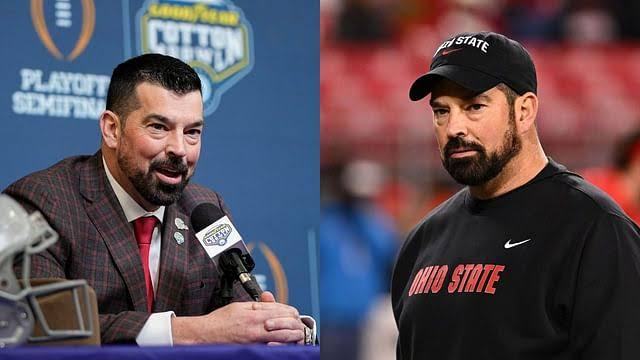
Unprecedented Rejection: Ohio State’s QB Julian Sayin Rejects $6.5 Million NIL Offer from USC, Prioritizing Team Loyalty Over Financial Gain
In an unprecedented turn of events, Ohio State University’s quarterback recruit Julian Sayin has made headlines by turning down a massive $6.5 million NIL (Name, Image, and Likeness) offer from the University of Southern California (USC). In an era where athletes, particularly those in high-demand positions like quarterback, are increasingly lured by lucrative endorsement deals and financial incentives, Sayin’s decision has sent shockwaves throughout the college football world. The move highlights a growing trend of athletes prioritizing team loyalty, personal values, and long-term goals over immediate financial gain.
The $6.5 Million NIL Offer
The offer from USC was one of the most generous in recent history, reflecting the immense value placed on Sayin’s talent as one of the top quarterbacks in the nation. With the rise of NIL deals in college sports, this $6.5 million deal, reportedly consisting of a combination of endorsement deals, brand partnerships, and other financial perks, would have set Sayin up for life financially. NIL deals, which allow college athletes to profit from their personal brands, have drastically transformed the landscape of collegiate sports since their inception in 2021, with top-tier athletes regularly securing seven-figure deals.
For a young quarterback like Sayin, the prospect of such a substantial offer would typically be seen as a once-in-a-lifetime opportunity. However, despite the financial allure, Sayin chose to reject the deal in favor of staying committed to Ohio State and upholding the values of team-first mentality and long-term career development. His decision marks a rare and bold move in an age where financial success often takes precedence over traditional sports values.
A Focus on Loyalty and Development
Sayin’s decision to turn down the substantial NIL offer has been widely praised by coaches, former players, and sports analysts, who view it as a testament to his character and commitment to team culture. In a statement, Sayin explained his reasoning: “At the end of the day, it’s not about the money. It’s about building something special with my teammates and honoring the commitment I made to Ohio State. This is where I feel I can grow the most, both as a player and as a person.”
While NIL deals offer athletes a chance to secure their financial future, they can also introduce external pressures that may distract from their primary focus—developing their skills, building team chemistry, and navigating the demands of high-level collegiate athletics. For Sayin, remaining at Ohio State gives him the opportunity to work with renowned coaches, such as head coach Ryan Day, who has consistently developed top-tier quarterbacks, and to continue his progression toward potentially being a top NFL draft pick in the future.
The Changing Landscape of College Football
Sayin’s rejection of the USC offer also sheds light on the shifting priorities within college football. In recent years, athletes have become more empowered, thanks to the introduction of NIL deals, which have fundamentally altered the recruiting landscape. Schools with more resources, like USC, have been able to offer lucrative deals to attract top recruits, often making it difficult for programs without deep pockets to compete. Sayin’s decision indicates a more nuanced perspective among elite athletes, who are increasingly evaluating opportunities based on factors such as team fit, coaching staff, development programs, and school culture rather than just financial incentives.
Moreover, Sayin’s choice could influence future recruits, particularly quarterbacks, who may begin to prioritize long-term growth and team chemistry over short-term financial gain. It also signals that while NIL has opened doors for athletes, it has not completely erased the traditional values of college football, such as loyalty to a program and the desire to win championships with teammates.
A Strategic Move for the Future
While rejecting a $6.5 million deal may seem like a significant financial sacrifice, Sayin’s decision may actually prove to be a savvy long-term move. If he continues to develop as a quarterback at Ohio State, he could be positioned for an even larger payday in the future, both through potential NIL deals and, more importantly, through the NFL Draft. Top quarterbacks who excel in college often secure endorsement deals that far surpass the earnings of an early NIL deal, and a strong collegiate career could position Sayin to be a high pick in the NFL Draft, where the financial rewards are substantial.
Additionally, Sayin’s commitment to Ohio State could help cement his legacy within the program. Ohio State has a rich history of producing NFL-caliber quarterbacks, and by leading the team to championships, he could establish himself as one of the greatest to ever wear the Buckeyes uniform. His decision to stay loyal to Ohio State may ultimately provide him with the opportunity to achieve the kind of recognition and legacy that financial incentives alone cannot guarantee.
Leave a Reply